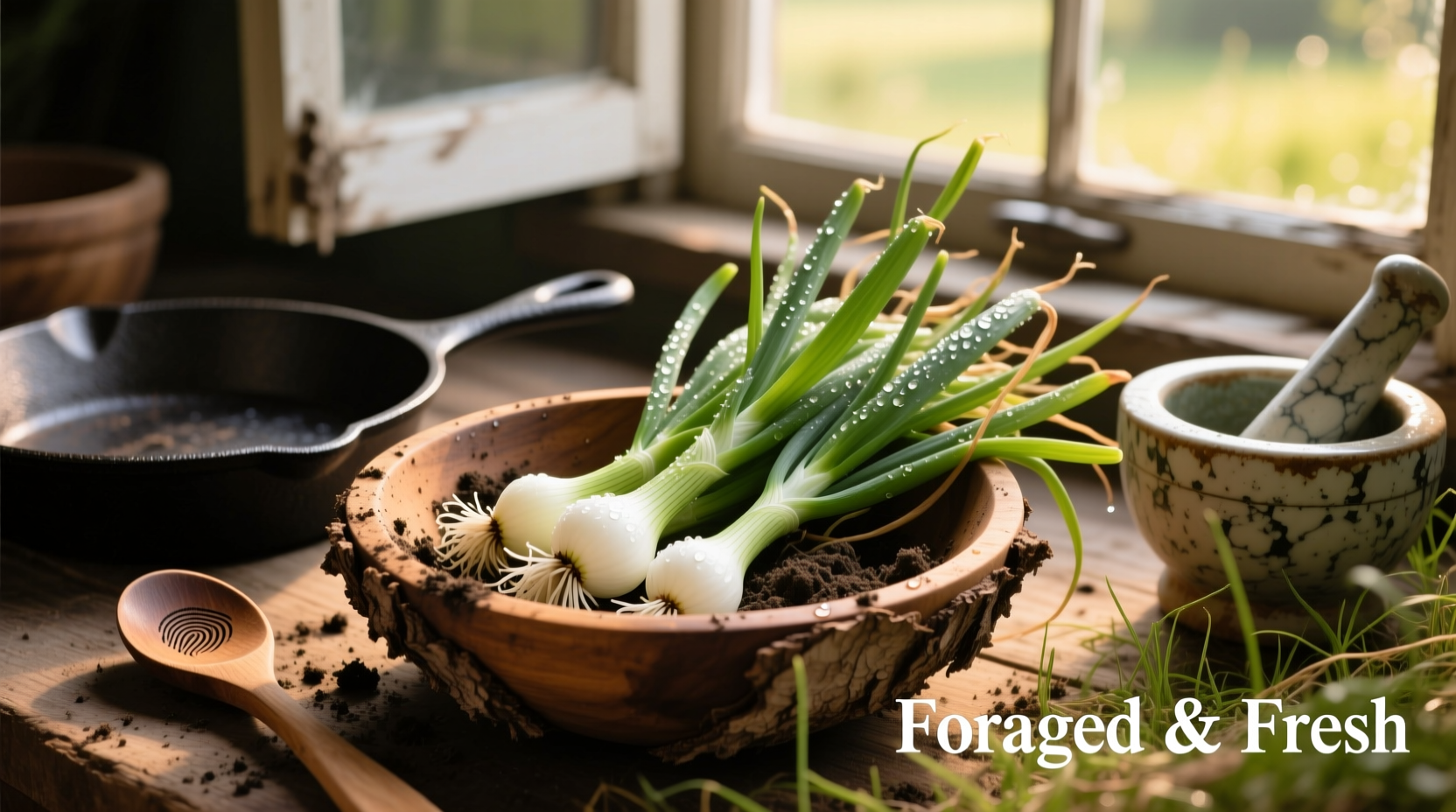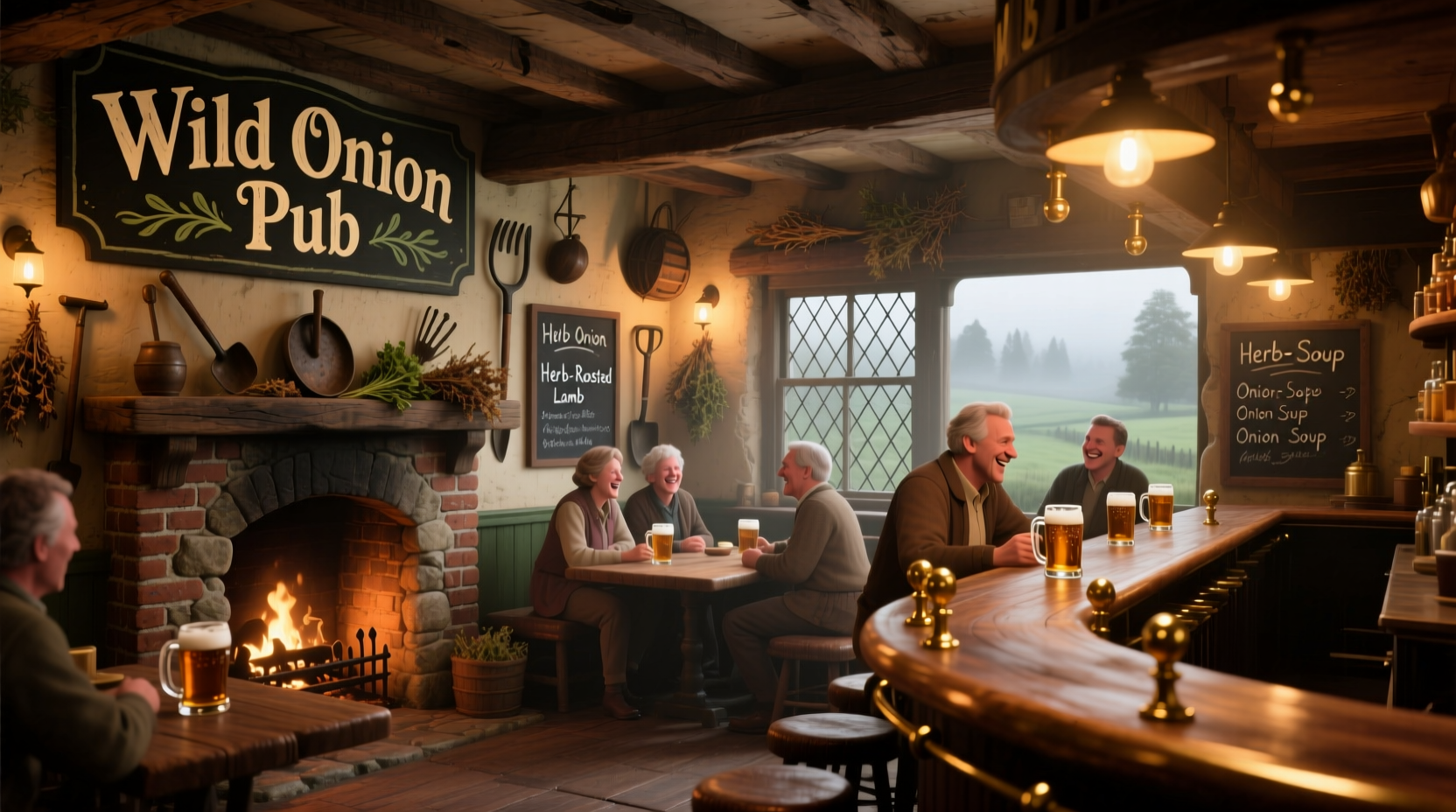Discover how wild onions transform ordinary pub fare into extraordinary culinary experiences. This guide reveals everything you need to know about incorporating these seasonal foraged ingredients into classic pub dishes and beverages—safely and sustainably.
What Exactly Are Wild Onions?
Wild onions (genus Allium) grow naturally across North America, Europe, and Asia. Unlike cultivated varieties, these hardy plants thrive without human intervention in meadows, forests, and along riverbanks. The most common species include ramps (Allium tricoccum), wild garlic (Allium ursinum), and field onions (Allium vineale).
What makes wild onions special for pub menus? Their complex flavor profile—combining garlic, leek, and traditional onion notes—adds depth to dishes that standard onions can't replicate. Chefs at craft-focused pubs prize them for their seasonal availability and connection to local terroir.
Identifying Wild Onions: Safety First
Correct identification is non-negotiable. Mistaking toxic plants for wild onions has caused serious poisonings. The key differentiator? Wild onions emit a distinct onion or garlic scent when crushed. Toxic look-alikes like death camas lack this characteristic aroma.
| Feature | Wild Onions | Death Camas (Toxic) |
|---|---|---|
| Smell Test | Strong onion/garlic scent | No distinctive odor |
| Leaf Shape | Flat, smooth leaves | Round, hollow leaves |
| Bulb Appearance | White bulb with papery skin | Chestnut-brown bulb |
| Flower Color | White or pink clusters | White star-shaped flowers |
According to the USDA's National Plant Database, proper identification prevents dangerous misidentification. Always perform the smell test before harvesting or consuming any wild allium species.
Historical Journey of Wild Onions in Pub Fare
Wild onions have graced pub menus for centuries, evolving from survival food to gourmet ingredient. Understanding this timeline reveals why modern craft pubs are rediscovering these traditional flavors.
- Pre-1800s: Indigenous communities across North America incorporated wild onions into daily meals and medicinal preparations
- 1800-1900: European settlers adopted wild onions into frontier cooking, featuring them in tavern stews and breads
- Early 1900s: Commercial onion farming reduced wild onion usage in mainstream cooking
- 1970s-1990s: Foraging renaissance begins among culinary pioneers
- 2000s-Present: Craft pub movement embraces wild onions as signature seasonal ingredients
The University of Kentucky's Wild Food Database documents how Appalachian communities preserved wild onion traditions through generations, influencing today's pub menus with dishes like ramp pizza and wild onion dip.
Seasonal Availability and Sustainable Harvesting
Wild onions follow strict seasonal patterns that affect pub menu planning:
- Ramps: Available March-May (eastern North America)
- Wild Garlic: Available April-June (Europe and North America)
- Field Onions: Available May-August (widespread)
Sustainable harvesting practices are essential. The North American Foraging Council recommends taking no more than 5% of any patch and leaving bulbs intact to ensure regrowth. Many craft pubs now partner with certified foragers who follow these ethical guidelines.
Signature Pub Dishes Featuring Wild Onions
Craft pubs transform wild onions into memorable dishes that showcase seasonal ingredients:
Classic Wild Onion Soup
This elevated version of French onion soup uses wild onions for complex flavor. Slow caramelization brings out natural sweetness, finished with Gruyère cheese on toasted baguette.
Wild Onion and Potato Hash
A brunch favorite featuring diced potatoes pan-fried with wild onions, bell peppers, and smoked paprika. Topped with a perfectly fried egg.
Ramp Pesto Pasta
Wild onions blended with walnuts, Parmesan, and olive oil create a vibrant green sauce tossed with fresh pasta and grilled chicken.

Crafting Beverages with Wild Onions
Innovative mixologists incorporate wild onions into unique beverages:
- Wild Onion Simple Syrup: Creates savory cocktails when combined with gin or vodka
- Ramp Bloody Mary: Adds earthy complexity to the classic brunch cocktail
- Wild Onion Infused Beer: Some craft breweries create limited edition ales featuring wild onion notes
According to research from the Culinary Institute of America, the sulfur compounds in wild onions interact uniquely with alcohol, creating complex flavor profiles that standard onions cannot replicate.
Preparing Wild Onions for Cooking
Maximize flavor while preserving texture with these professional techniques:
- Cleaning: Rinse thoroughly in cold water to remove soil
- Preparation: Separate bulbs from greens; both are edible
- Cooking Order: Start with bulbs (longer cooking time), add greens at the end
- Heat Management: Medium heat preserves delicate flavor compounds
Professional chefs recommend using wild onions raw in salads or finishing cooked dishes with fresh greens to preserve their distinctive flavor profile.
Finding Wild Onions Responsibly
For home cooks interested in sourcing wild onions:
- Check local farmers markets during spring months
- Look for specialty grocers carrying foraged ingredients
- Join guided foraging tours led by certified experts
- Consider growing your own ramps from seed (takes 2-3 years)
The Appalachian Sustainable Development organization notes that responsible foraging preserves these valuable plants for future generations while supporting local food economies.
Wild Onion Pub Menu Planning Tips
For pub owners considering wild onion dishes:
- Feature them as limited-time seasonal specials
- Train staff to explain proper identification to customers
- Source from certified foragers with sustainability practices
- Create educational materials about wild onion history
- Offer tasting events to introduce customers to these unique flavors











 浙公网安备
33010002000092号
浙公网安备
33010002000092号 浙B2-20120091-4
浙B2-20120091-4